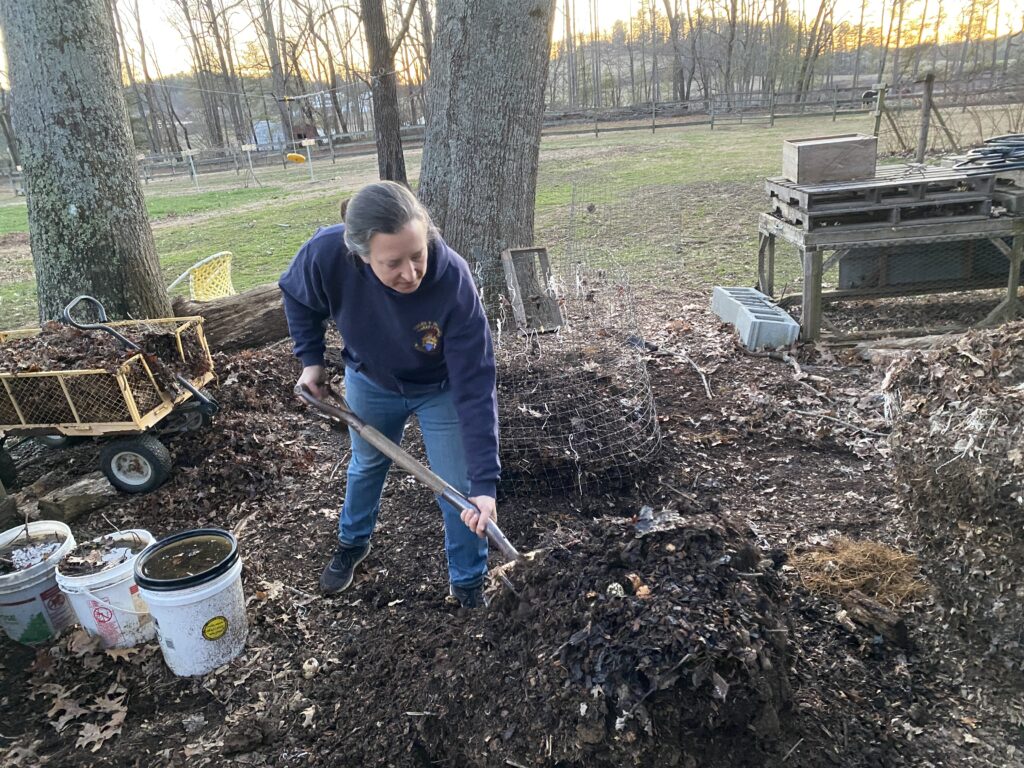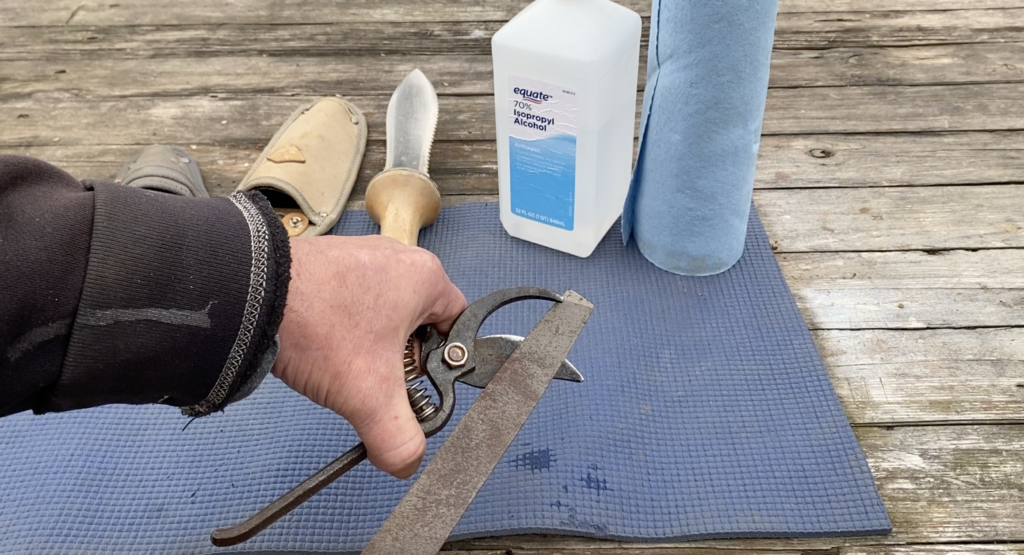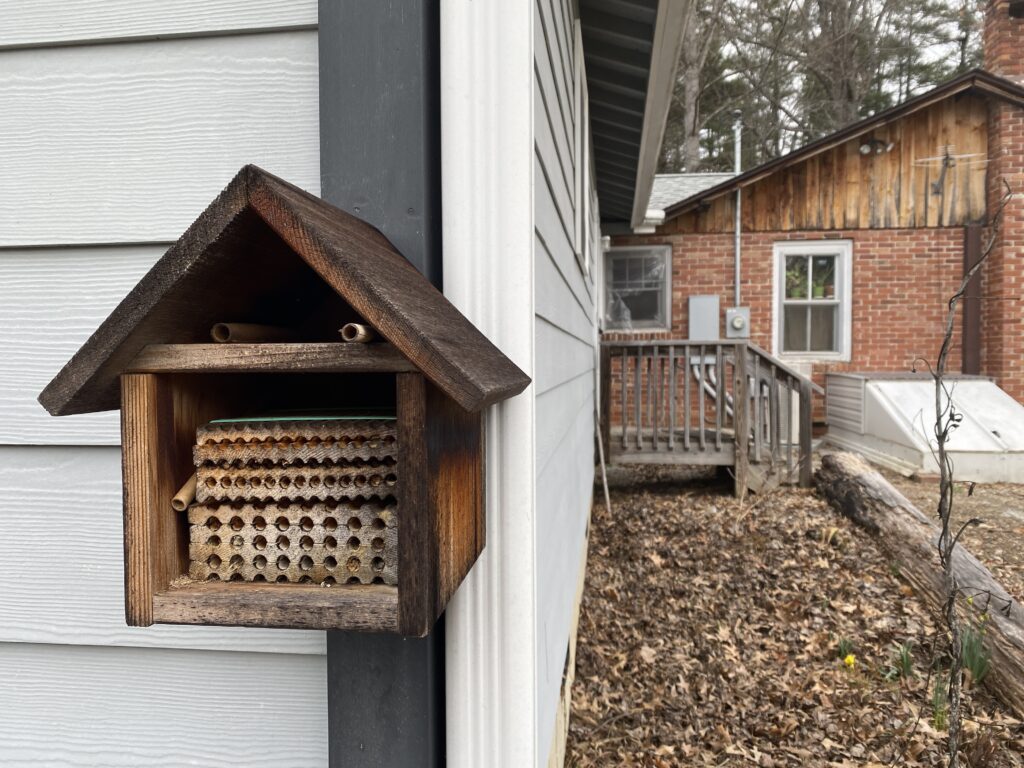Gardening Tasks To Do in February
Relish a few more restful weeks and turn your garden daydreams into a concrete plan. Feeling tempted to plant seeds early so the fresh new green can chase away the winter blues? You’ll find a couple resources for setting up a growing area and deciding when to plant. Plus you’ll find reminders for tasks best done during when plants are dormant.
Who Is This For?
Our recommendations are for gardeners interested in growing healthy food and healthy ecosystems. We use organic methods, get the whole family involved, and work with nature using ideas from ecology and permaculture.
Late winter falls in February for us – we live in the Northern Hemisphere in USDA Zone 7. These recommendations can be adapted to many gardens in Zone 6-8. (Not sure what your zone is? Find your USDA zone here. Not in the U.S.? This pdf comparing international zone systems may help.)
Quick 3 for Busy Gardeners
If you have limited time for gardening, I recommend you focus on these three areas this month:
- Prune dormant shrubs and trees.
Many plants are best pruned during winter when they’re dormant. Trim out dead and diseased stems. Prune fruit trees and roses into a nice open shape so that sunlights can reach the leaves to fuel flower and fruit production. If you need to shape plants (for a more formal hedge or to keep it from growing toward a power line), make those cuts now. Use sharp, clean pruners and saws.
For blueberries, this tutorial from NCSU’s Bill Cline is fantastic. - Order seeds and plan for plant sales.
If you haven’t ordered seeds yet, put it on your to do list this week. For inexpensive options, ask around about local seed libraries or seed swaps.
I also like to put upcoming plant sales into my calendar so I don’t miss them! Check out 4H, Master Gardeners, botanic gardens, food coops, and school clubs. You’ll get good prices, find unique varieties, and support your community. Win-win-win! - Set up to grow your own seedlings.
Starting seeds inside is a fun way to garden early. Once you have a few lights and shelves, it can be an inexpensive way to get lots of plants! When you grow your own vegetable starts, you can also try different varieties, since garden centers often only sell one or two varieties. Sign up below to get a project plan for a simple setup. Or get started in a sunny window with microgreens.

Plants
- Make a plan for what to plant when.
This Planting Planner spreadsheet can help you plan based on your last frost date. I like to groups seeds into planting time windows, and then see what the weather and our family schedule looks like to actually get them in the ground. Some of our students like to plan in more detail so they can plant with the phases of the moon and spread the work out to do a little planting each day. - Start seedlings.
Be careful here. It’s tempting to start everything really early! But focus on starting “hardy” plants that can go out early. You don’t want to end up with big seedlings waaaay before you can plant them outside. They tend to stall and take more time to get going when you do finally transplant them. Be reassured that waiting can result in timing that takes your plants from actively growing inside to actively growing outside. Our favorite way to start seedlings is soil blocking. It allows you to start LOTS of seeds indoors without having to use a bunch of plastic. - Spray dormant oil on fruit trees, if needed.
- Grow microgreens.
Put that planting energy into the Fastest, Easiest Container Garden - Looking for a rainy day project?
Make your own Seed Strips. This is one of my favorite ways to get small seeds spaced out when planting with the kids. - “Force” blooms.
Bring in stems of blooming shrubs and trees for a spring preview.

Soil
- Turn your compost.
Compost will happen without turning the pile, but it takes longer. If you want to get a batch of compost finished to use in spring, it’s time to turn, baby, turn! I like to move it between bins, peeling off the outer laters to put at the center and piling the inner layers on the outside. Use this as a chance to adjust the pile by watering or adding more greens/browns as needed. (If you’re unsure about this, our Happy Garden Guide to Composting can help.) - Observe puddles.
Look at what happens as snow melts or take a rainy day walk to see how water moves in your yard. Where does it run off the house or driveway? Does it puddle up in spots? What happens where you have hills or ditches? You’ll be able to use these observations to choose planting areas and shape the soil to catch, slow, and sink the water. You can use this for harvesting rainwater as well. - Empty beds without a mulch blanket?
Put in a spring cover crop. Try a mix with a few species that will sprout in cooler soils: red clover, field peas, vetch, yellow mustard, oats, barley, and cereal rye. Ideally, broadcast them just before rain. The cover will start feeding the soil as soon as they sprout.

Gear
- Clean out and clean up tools.
Don’t wait to spring clean – you’ll have other things to do soon! Make time to clean, sanitize and sharpen your pruners, shovels, hoes, and other tools. If you have extra tools that you rarely use, consider giving them away. As a bonus, if you have something broken, you’ll realize it early and have time to look for a replacement. - Starting a new bed?
Our tutorial for a How To Build a Simple Raised Bed (in a weekend…with three kids helping!) might be a helpful step-by-step.

Wildlife
- Put up nesting boxes for birds and bees. Birds start looking for nest sites this time of year, so it’s a great time to get new boxes out. You can also add homes for native pollinators, like mason bees.
- Continue to enjoy watching wildlife at a feeder. Choose healthy foods and be sure to keep your feeders clean. Here are tips from Audubon on feeding birds.
Beyond
- Visit a local garden. It’s fun to visit during the “off” season to see what interesting shapes and barks the horticulturalists have selected. Plus, you’ll often find early bloomers and special shows to brighten up these last few weeks of winter.
- Take a gardening class. Your local botanic garden or extension service may offer classes nearby, or join one online! We’d love for you to check out our intro class, Start Your First Garden, or dive deeper into soil health with our Foundations of a Happy Garden.
We’d love to hear from you…
What tasks do you take care of in late winter? And how do you balance resting up with gearing up? Tell us in the comments below!
